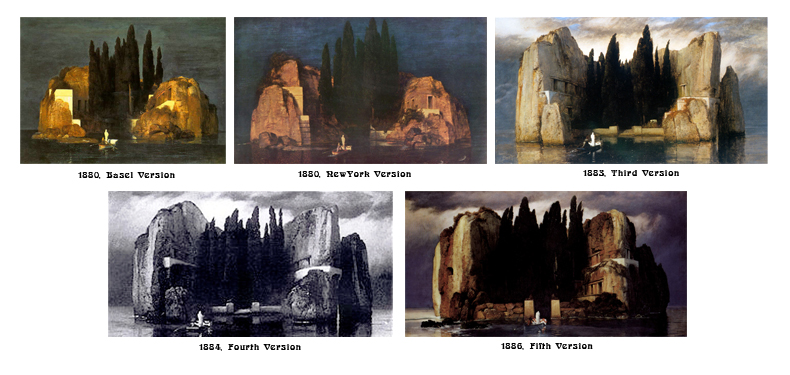 Swiss artist Arnold Bocklin was born in the city of Basel, Switzerland on 16th October 1827. He was a revered symbolist painter depicting fantasy and mythological allegories on canvas.
Swiss artist Arnold Bocklin was born in the city of Basel, Switzerland on 16th October 1827. He was a revered symbolist painter depicting fantasy and mythological allegories on canvas.
His study of art began in Dusseldorf Academy under Johann Wilhelm Schirmer, a German landscape artist who himself was much respected among the other artists. Arnold’s study under this adept artist started to pay off as he learned the basics and the fundamental skills a painter requires. Seeing his promising artistic abilities, Schirmer sent him Antwerp and Brussels to learn about the works of Flemish and Dutch artists. After that he went to Paris visiting the Louvre. The works he saw there impressed him deeply as he stayed there for a while working on several paintings.
Conscription is active in many countries due to various reasons including shortage of people willing to join military, shortage of people or any other reason which would not allow the country to build its army. This rule was also applied on Arnold Bocklin after reaching certain age. He served in army for some times.
After conscription, he went to Rome in 1850, where he married to a girl named Angela Rosa Lorenza Pascucci three years later. During his stay he visited the ancient and historically important places of Rome which may had done some impulse on the artist mind to depict mythology.
After returning to Munich in 1856, he held some public exhibitions of his works as well as made some of his major paintings like Nymph and Satyr, Heroic Landscape, Sappho.
On his second visit to Rome during 1862 to 1866, some more important works were produced this time adding some bold color play into paintings, which made his paintings more vivid. An Anchorite in the Wilderness, Roman Tavern and Villa on the Seashore are the prominent ones.
Most Renowned works
His excellent works were much adored by other artists and viewers for their precise quality of depiction and the meaningful portrayal with some mythological allegory attached to it. That mythical figures and stories kept the viewer for a long time beholding any of his paintings. Though, depicting historical or mythological was not a new idea at the time, but Bocklin’s depiction style with symbolism was the key-element to mesmerize the viewer.
The unique quality is visible in his mostly revered paintings titled Plague and Isle of the dead. These two paintings are the major source of recognition for the artist in present. Because in paintings, not only the excellent work but also some weightage of a lucrative history associated with art helps to make the work more popular in general. Both are presented here to serve your mind:
The worldwide outbreak of plague in 19th century may have inspired the artist to render the first painting. It was completed in 1898, just around the time when the pestilence was catching its peak. Artist’s fascination towards pestilence, death (as it is apparent in his Portrait of Myself, the picture at the beginning of the article) and mysteries appears here. The death is riding on a winged creature with a scythe (death’s weapon) in a hand. The death’s dried and withered face portrays the insensitivity towards the life of the people in the village. It clearly related with the contemporary outbreak of the pestilence.
The other one is also related with death. It is more near to artist’s heart. It is said that the painting was inspired by the nearby cemetery to Bocklin’s studio. It was the same cemetery where his baby daughter Maria was buried. The reason of her death is unknown but it made a severe impact on the artist mind with the subject of death, which repeated in other paintings as well.
As the self-defining title suggests it describes an isle of the dead. It could the imaginary world of the dead people, but the real meaning of the picture is vague as the artist himself described about it in this manner: “A dream picture: it must produce such a stillness that one would be awed by a knock on the door.”
The painting became such a success in Europe in early 20th century that the reproductions were “found in every Berlin home”. The reach of his art can be conceived when we know that one of his art’s lover was the infamous leader of Germany Adolf Hitler, who owned total of 11 paintings produced by the artist, this one being his favorite one. Maybe the liking in the similar subjects resembles their fascination over the core subject of death with totally different approaches and causes.
Additionally, the seminal impact of the painting during many years after its production is noticeable. The painting encouraged a composer (Heinrich Schuiz-Beuthen) to compose a symphonic poem with similar title. The known eccentric painter Salvador Dali depicted a painting after watching this painting. Other than that some movies, plays, literature and some video-games has a cameo of the painting in one way or the other.
Due to its popularity artist made total of 5 versions of the same painting in the time of six years after the first one was completed. Here is a compilation of those five versions:
One more thing is left to say about his artistic fame in early 20th century. Aside from his works’ presence in various works of arts, there is also a typeface named after him, which is very rare for any artist. In 1904, Otto Weisert designed the typeface. If you want to see the fonts, check out the captions of the pictures included in this article. The fonts are called ‘Bocklin’.
After enjoying the fame in his time, Arnold Bocklin died on 16th January, 1901 and now probably is living his afterlife on the Isle of the Dead with peace.


